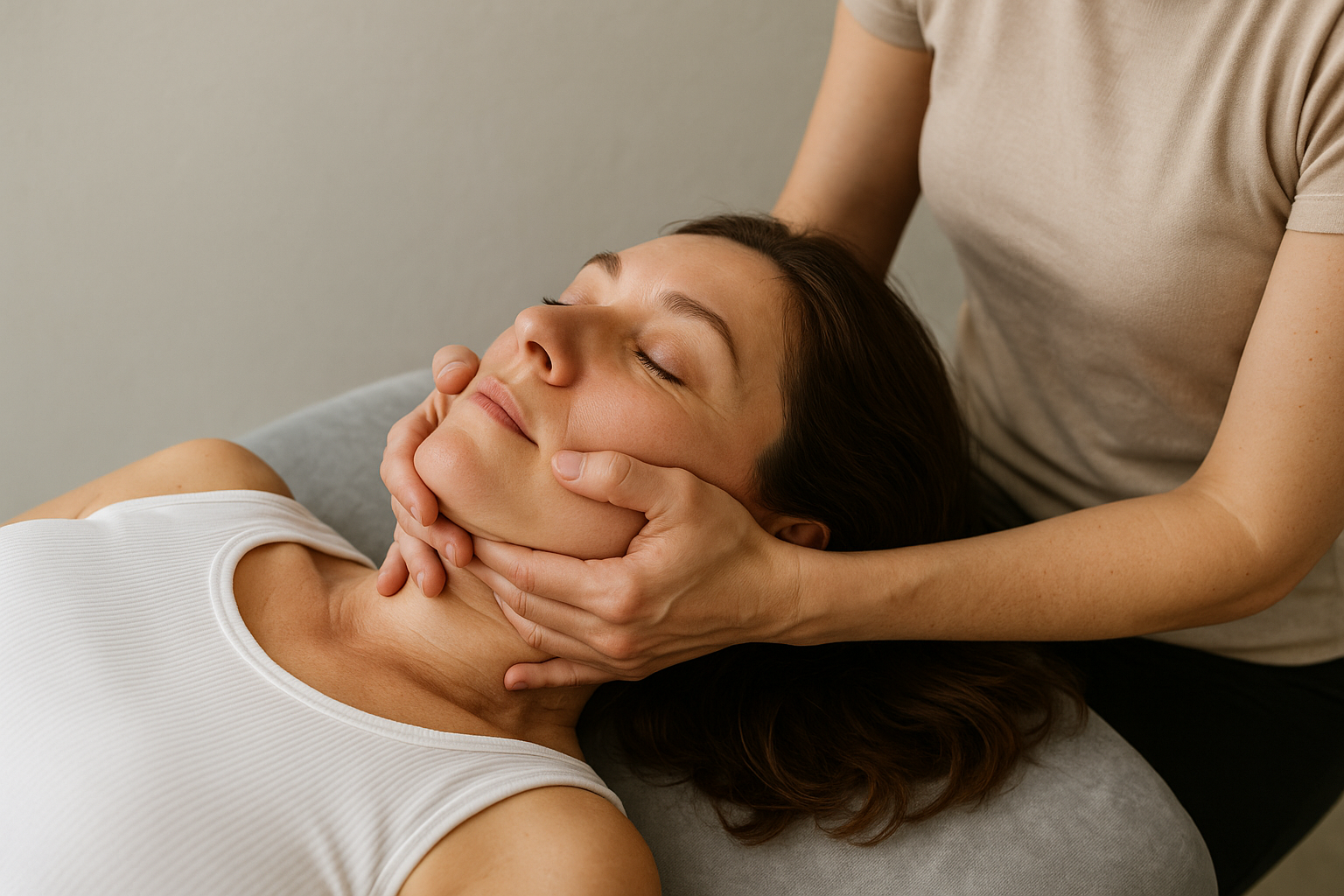Physical Therapy Info Health Tips
Our Integrated Physical Therapy blog, your go-to source for physical therapy articles and holistic health information. We provide expert insights, practical physical therapy tips, and the latest developments in the field. Whether you're recovering from an injury, managing chronic pain, or looking to improve your overall well-being, our physical therapy blog covers a variety of helpful topics.
Our goal is to empower you with the information you need to take an active role in your health and recovery. Ready to schedule an appointment and take control of your health? Contact Integrated Physical Therapy at 305-967-8976.
Jaw Tension & TMJ Pain Relief with Myofascial Release in Hallandale

Why Jaw Tension Lingers
Jaw tension sticks around because daily habits pile up. Hours at a computer, clenching through stress, or grinding teeth at night. These add up fast. The jaw gets stiff. Muscles start to hurt. Chewing and talking turn into a hassle. Pain can spread to your temples, neck, or shoulders. It’s more than a sore jaw. It disrupts everything you do.

The Fascia Connection
Fascia runs everywhere, under the skin, around muscles, through the jaw. When it it tightens, everything nearby feels it. A stiff jaw isn’t just about the joint. Fascia binds up, pulling on muscles and nerves. The result? Stiffness, headaches, and that deep ache that never quite lets go. Myofascial release therapy steps in here. It works through the layers, loosening the grip, letting the jaw move again. Myofascial release therapy doesn’t just chase symptoms. It goes after the real restrictions holding you back.
Muscles That Refuse to Let Go
Jaw pain isn’t just about one muscle. Several work together, and when one locks up, the rest follow. Here’s where trouble starts:
- Masseter – Clenches hard with every bite. Stress makes it clamp down even more.
- Temporalis – Runs along the side of your head. Tension here leads to pounding headaches.
- Pterygoids – Deep inside, these control side-to-side jaw movement. When they seize, opening your mouth feels impossible.
- SCM – Runs down the neck. When it’s tight, the jaw pulls out of line.
- Trapezius – Sits across the upper back and shoulders. Carries stress, feeds tension up into the neck and jaw.
These muscles don’t work alone. They pull on each other, creating patterns that keep pain coming back. Specialized manual therapy techniques target these connections, working through both surface and deep layers. The goal is to break the cycle, restore movement, and let the jaw relax.
Trigger Points and Pain Patterns
Trigger points are the hidden culprits. They’re small knots, hard to find, but impossible to ignore once they flare up. Press on one, and pain shoots across the jaw, into the ear, or up the side of the head. These points don’t just hurt where they sit. They send pain far from the source. Gentle, steady pressure during expert myofascial release sessions finds these knots and eases them out. The relief is real. Muscles soften. The jaw moves without that familiar catch or pop.
Recognizing these patterns matters. Jaw pain often comes with warning signs, morning headaches, tightness after a long call, or soreness after chewing. Spotting these early helps you act before pain takes over. The right therapy doesn’t just chase pain. It teaches you to notice what sets it off and how to keep it from coming back.
What Lasting Relief Looks Like
Quick fixes don’t last. Real change comes from a plan that covers every angle. Hands-on therapy starts the process, but what you do at home keeps it going. Specialized rehabilitation techniques build strength and flexibility. Gentle stretches loosen tight spots. Targeted exercises retrain muscles to work together, not against each other. Therapeutic massage techniques keep tension from building up between sessions.
- Daily jaw stretches, simple, effective, and easy to fit into a routine
- Neck and shoulder exercises, break the link between stress and jaw pain
- Breathing drills, reduce clenching and grinding, especially at night
- Posture checks, keep the head and jaw in line, even during long workdays
Consistency matters. A few minutes each day can mean fewer flare-ups, better sleep, and a jaw that finally feels normal again.
Why Myofascial Release Works
Many treatments focus on the joint or the teeth. Myofascial release goes deeper. It works through the layers of tissue that hold tension long after the pain starts. The process isn’t rushed. Each session finds the real restrictions, not just the obvious sore spots. Over time, the jaw moves easier. Headaches fade. Chewing, talking, and even yawning stop feeling like a risk.
People notice the difference. Less clicking. Fewer headaches. A jaw that opens and closes without a fight. The change isn’t just physical. Better sleep, clearer focus, and less stress follow when pain stops running the show.
Ready for Relief
Jaw pain doesn’t have to be a daily struggle. We help people move past it every day. Want a plan that actually works? Reach out to start your recovery. Call 305.967.8976 or request an appointment to get started.


